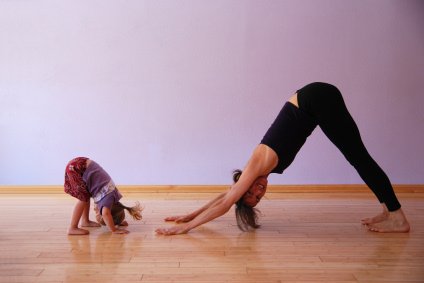When it
comes to exercise, most people start the summer with good intentions. Longer
days and better weather mean jogging in the street is a more viable (and
appealing) option, while the thought of putting on a swimsuit is more than
enough encouragement to head to the gym to shed a few pounds! However, if you
have a young child or children, you might find your good intentions fall by the
wayside... buried beneath a mountain of diapers and wet wipes.
There’s no
doubt about it; children are a full time job and then some. If you’re a stay at
home parent you can’t simply clock off for the evening, and if you work, you’ll
likely want to spend your free time with your little ones. Either way, if
you’re able to get down to the gym three times a week, you’re actually one of
the lucky ones.
If you’re
feeling the urge to get active this summer, don’t let your children become your
excuse. There are a variety of activities you can get involved in with your
children by your side, helping you shed that baby weight, filling your body
with endorphins and encouraging your kids to live a healthy life as well.
Here are a
just a couple of ways you can exercise with your kids around, keeping them
happy in the long holidays and preventing you from tearing your hair out – hair
loss prevention being just another one of the many
benefits of exercising with your children.
Walk
Ditch the
car, it’s sunny outside and get those legs moving. According to the Physical
Activity Guidelines for America, published in 2008, the average adult needs to
do 2 hours and 30 minutes of brisk walking every week,
combined with muscle-strengthening activities on two or more days, just to stay
healthy. In terms of walking that’s 30 minutes, five days a week.
Walking is
good for the heart, lungs and bones, improving the cardiovascular system and
boosting circulation too. It can have all the same benefits as jogging but
without the potential for injury.
During the
fine days of summer, it’s much easier to drum up the enthusiasm to get out
there and start walking. So make it your mission, every morning or after work,
to get outside and get moving – kids in tow. The beauty of walking is that it’s
suitable for children of all ages. If you have a young baby, try using a
carrier and think about the extra calories you’ll be burning off along the way;
this is also an opportune time to bond with your baby. Toddlers can be pushed
along in a stroller – either using the opportunity to see the world or have a
little snooze. Older children can walk, skate or scoot alongside you, using up
their own boundless energy. Try to vary your walks to give your kids something
new and interesting to look at.
If you
don’t have 30 minutes to spare, five days a week, you can break it up even
further. If you have to go to the convenience store don’t jump into your car,
get your walking shoes on and boost your health while saving fuel too. Three
10-minute bursts of exercise a day adds up to 30 minutes.
Dance
Kids love
to dance, so put on their favorite CD and dance along to the tunes. Some of the
best exercises can be done to nursery rhymes, which involve a lot of bending
and stretching – ideal for toning up those muscles. If you don’t know the
moves, simply make up your own; march, jump up and down, skip and hop – do
whatever you please, just keep that heart rate up and those muscles moving.
Yoga
 |
| Yoga helps stressed out kids, more here. [Photo credit] |
Yoga is
extremely beneficial for building strength, promoting good balance and
improving posture, and kids can do it too. There are now a range of children’s
yoga courses available where you can exercise alongside your child while
picking up tips from the experts. If you can’t find a kids’ yoga venue near
you, there are plenty of videos of simple poses available on YouTube to help
you get started.
Key
Note is to Stay Active
Even if
you’re not into formal activities like those listed above, you can get healthy
and active in the sunshine. Have a water-fight, skip around the garden,
trampoline in the back yard and climb trees – just get out there, get moving
and get healthy!
--------
Guest post by Lily Alberts
--------
Guest post by Lily Alberts
Lily
Alberts is a writer and health fanatic who works with a licensed online
pharmacy as well as a number of nutrition and fitness sites. She's written on
everything from hair
loss prevention to the sports physiotherapy, and tries to promote good
health within her own family.